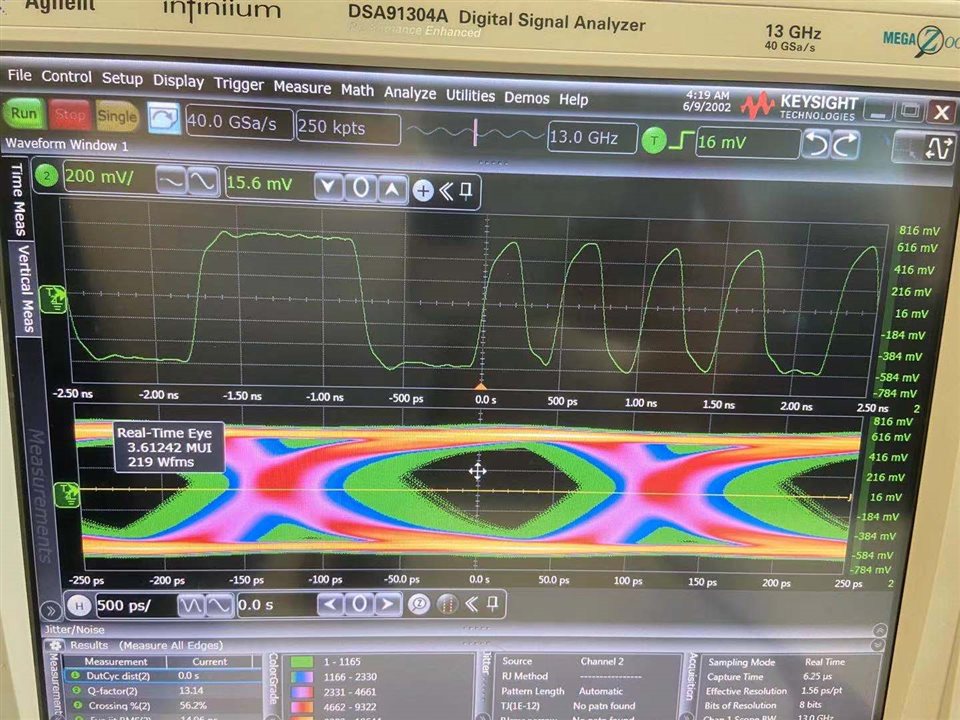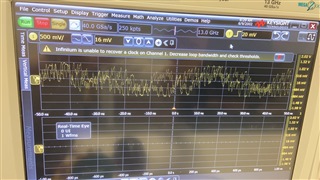Dear team,
My customer use our 962 paired with 935, and the CAR OEM asks them to provide the eye diagram.
They test 962's CMLOUT, but the result is not good. For the CMLOUT test, we followed datasheet's code example, do we have any other register configuration? Do we need to turn off the spread spectrum.
In addition, if we test the 962's RIN+/- directly and turn off the back channel, we can't see the eye diagram as the second picture. Do we need any special register configuration for this method?


Thanks & Best Regards,
Sherry

